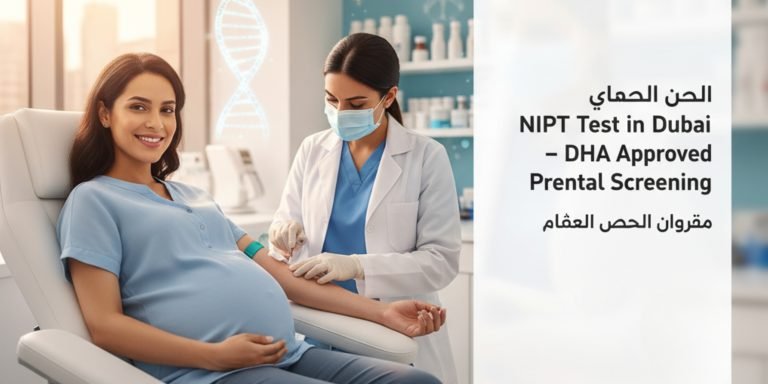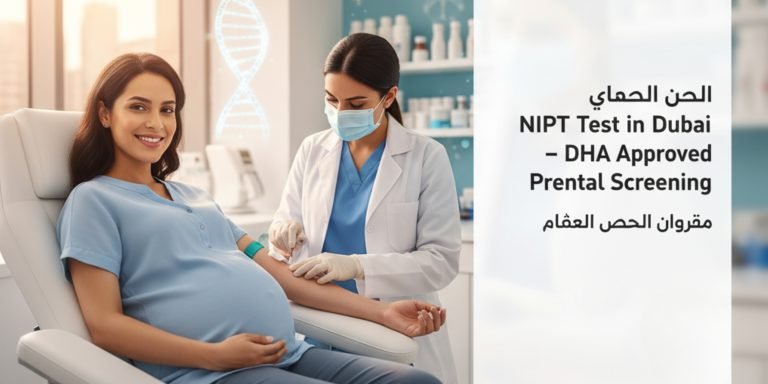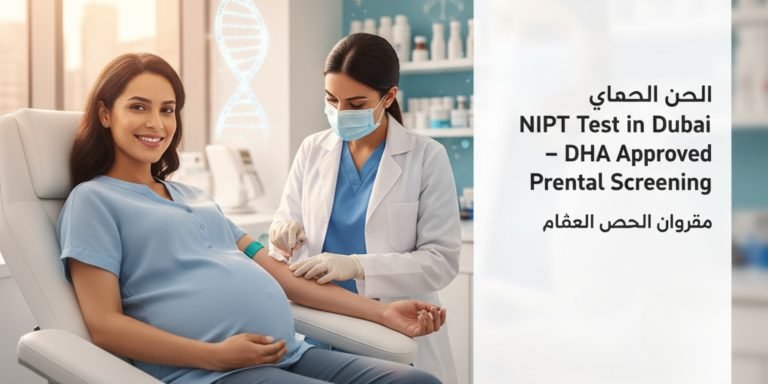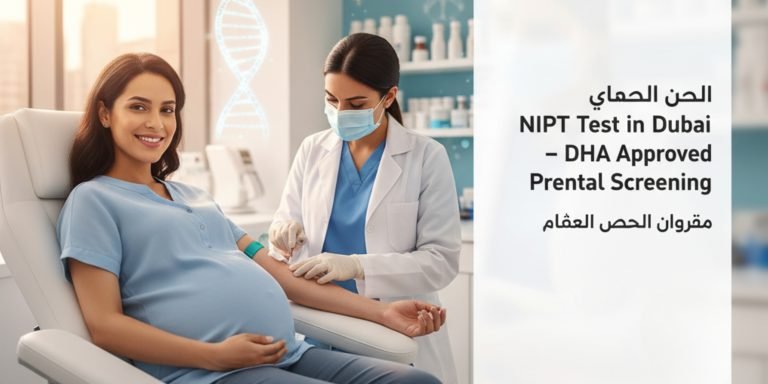Discover How NIPT Test Works: A Complete Guide to Testing
Discover How NIPT Test Works: A Complete Guide to Testing

The Non-Invasive Prenatal Testing (NIPT) test is a revolutionary blood test that screens for chromosomal abnormalities in a developing fetus with high accuracy, minimizing risks compared to traditional invasive methods. Expectant parents increasingly rely on NIPT for early insights into potential genetic conditions without the discomfort and risks of procedures like amniocentesis and chorionic villus sampling. As prenatal care standards evolve and DNA sequencing technology advances, NIPT has become a vital tool for detecting aneuploidies—including trisomies and sex chromosome abnormalities—while remaining noninvasive. This article explains the workings and benefits of NIPT by discussing its meaning, scientific process, accuracy, screening conditions, role in prenatal care, genetic counseling integration, potential risks, pricing, insurance issues, and frequently asked questions.
Learn more about the potential risks of NIPT for expectant mothers.
What Is the NIPT Test and Why Is It Important?
Non-Invasive Prenatal Testing (NIPT) is a blood test that analyzes cell-free fetal DNA present in the maternal bloodstream to screen for chromosomal abnormalities. It is increasingly important in modern prenatal care for early detection of genetic conditions.
What Does Non-Invasive Prenatal Testing (NIPT) Mean?
NIPT obtains genetic information about the fetus from a simple maternal blood draw. The test examines small fragments of fetal DNA shed from the placenta into the mother’s circulation. Using advanced DNA sequencing, it identifies chromosomal imbalances with minimal risk to both mother and fetus—avoiding risks such as miscarriage associated with invasive procedures.
How Does NIPT Benefit Expectant Parents?
NIPT offers high accuracy in detecting common chromosomal abnormalities like Down syndrome (Trisomy 21), Edwards syndrome (Trisomy 18), and Patau syndrome (Trisomy 13) early in pregnancy. With sensitivity and specificity often exceeding 99% for common trisomies, the results help parents decide on further diagnostic testing and prepare for any necessary interventions. Its noninvasive nature minimizes stress and risk while providing rapid and detailed reports.
When Is the Best Time to Take the NIPT Test?
The test is typically recommended from the 10th week of pregnancy onward when adequate fetal cell-free DNA is present. Testing at this time maximizes accuracy and allows time for follow-up diagnostic procedures if needed, ensuring timely genetic counseling and medical planning.
How Does the NIPT Test Work?
NIPT works by isolating cell-free fetal DNA from a maternal blood sample and analyzing it using DNA sequencing technologies. This method creates a snapshot of the fetal genome to detect chromosomal imbalances without invasive sampling.
What Is Cell-Free Fetal DNA and How Is It Used in NIPT?
Cell-free fetal DNA (cffDNA) consists of tiny fetal genetic fragments found in maternal blood. Originating from the placenta, these fragments mirror the fetal genetic profile. In NIPT, laboratories extract cffDNA from maternal serum or plasma and use massive parallel sequencing to determine the chromosomal origin of each fragment. Statistical analysis of the DNA fragments helps identify abnormalities such as extra or missing chromosomes.
What Is the Procedure for Collecting a NIPT Sample?
A small blood sample (usually 10 mL) is collected from the expectant mother via standard venipuncture. The sample is processed to separate plasma, which contains the cell-free DNA. This uncomplicated and noninvasive procedure reduces discomfort and risk compared to invasive diagnostic methods like amniocentesis.
How Are NIPT Results Analyzed and Interpreted?
After extraction, the cell-free DNA undergoes next-generation sequencing (NGS) that reads millions of fragments concurrently. The fragments are mapped to reference chromosomes and compared against statistical norms. Abnormal deviations suggest possible trisomies or monosomies. The results, provided as risk assessments rather than definitive diagnoses, help guide whether further invasive testing is needed.
What Chromosomal Abnormalities Does NIPT Screen For?
NIPT screens for various chromosomal abnormalities, offering key insights into fetal genomic health and guiding subsequent medical interventions.
How Does NIPT Detect Down Syndrome (Trisomy 21)?
The test detects Down syndrome by measuring the proportion of DNA fragments from chromosome 21. An excess indicates trisomy 21. Advanced sequencing techniques ensure detection rates above 99%, which allows for early counseling and preparation for further diagnostic steps.
What Are Edwards Syndrome (Trisomy 18) and Patau Syndrome (Trisomy 13)?
Edwards syndrome and Patau syndrome result from an extra copy of chromosome 18 or 13, respectively. NIPT identifies these by detecting an overrepresentation of DNA fragments from the affected chromosomes. Although less common than Down syndrome, detection rates for these conditions generally exceed 97%, making early identification essential for managing associated health challenges.
Can NIPT Detect Sex Chromosome Aneuploidies and Other Conditions?
Yes, NIPT can screen for sex chromosome aneuploidies such as Turner syndrome (45,X), Klinefelter syndrome (47,XXY), Triple X syndrome (47,XXX), and XYY syndrome (47,XYY). Research also explores detection of rarer chromosomal abnormalities and microdeletions. While sensitivity may be slightly lower for these conditions, NIPT still provides valuable information about the fetal chromosomal landscape.
How Accurate Is the NIPT Test?
The high accuracy of NIPT is one of its greatest advantages, making it a preferred screening tool for major chromosomal abnormalities and select sex chromosome aneuploidies.
What Are the Detection Rates for Common Chromosomal Abnormalities?
Detection rates for Down syndrome exceed 99% and are around 97–99% for trisomies 18 and 13. These impressive figures, together with low false-positive rates, underscore the test’s reliability. The performance is supported by rigorous statistical methods and high-throughput sequencing.
What Are the Risks of False Positives and False Negatives?
Although highly accurate, NIPT is a screening test and not diagnostic. False positives and negatives may occur due to factors such as maternal chromosomal variations, confined placental mosaicism, or low fetal DNA levels. In cases of high-risk results, confirmatory tests such as amniocentesis are recommended to ensure correct diagnosis.
How Does NIPT Compare to Diagnostic Tests Like Amniocentesis?
While diagnostic tests like amniocentesis provide definitive results, they carry a small risk of miscarriage. NIPT offers a safe, noninvasive alternative with high accuracy for initial screening. If NIPT indicates a high risk, more invasive tests can then be used for confirmation.
What Are the Risks and Benefits of the NIPT Test?
NIPT presents significant benefits along with some limitations, and understanding both is crucial for informed decision-making.
What Are the Main Benefits of Choosing NIPT?
The benefits include high accuracy, early detection, noninvasive sampling, and rapid turnaround of results. By eliminating the need for invasive procedures, NIPT minimizes physical risk and discomfort. The test’s ability to quickly inform parents about potential chromosomal abnormalities supports early intervention and comprehensive prenatal care.
What Are the Potential Risks or Limitations of NIPT?
As a screening rather than diagnostic tool, NIPT may produce false positive or negative findings due to low fetal DNA fractions or maternal mosaicism. Abnormal results must be confirmed with additional diagnostic tests. Furthermore, while it screens for many conditions, it does not detect all genetic disorders.
How Does NIPT Impact Pregnancy Care and Decision-Making?
Early and accurate detection via NIPT enables timely interventions, facilitating better pregnancy management. Combined with genetic counseling, the test empowers parents to understand risks and make informed healthcare decisions, thereby improving neonatal outcomes and reducing anxiety.
How Should Expectant Parents Prepare for the NIPT Test?
Effective preparation for NIPT helps ensure reliable outcomes and reduces anxiety during the screening process.
What Pre-Test Instructions Should Be Followed?
Expectant parents should adhere to guidelines from their healthcare provider, such as avoiding strenuous exercise and staying well-hydrated. Informing the provider about any recent medical treatments is also important. Discussing potential outcomes with a genetic counselor can further clarify the implications of the test.
What Can Patients Expect During the NIPT Procedure?
During the procedure, a healthcare professional performs a standard blood draw, typically taking less than 10 minutes. Mild discomfort from the needle is common, but the noninvasive process allows prompt return to normal activities. The collected sample is then processed to isolate plasma for DNA extraction.
How Long Does It Take to Receive NIPT Results?
Results are generally available within 7 to 10 days, facilitating prompt consultation with a genetic counselor if risk factors are identified. The rapid turnaround helps minimize anxiety and supports timely medical decisions.
How Can Genetic Counseling Support You After NIPT Testing?
Genetic counseling is an essential follow-up service that helps parents understand NIPT results and make informed healthcare decisions.
What Is Genetic Counseling and Why Is It Recommended?
Genetic counseling is provided by trained specialists who assess genetic risks and explain complex screening results. Counselors clarify the implications of a high-risk result and provide a supportive space for questions, ensuring that families understand the genetic landscape and can make decisions that align with their personal and medical needs.
How Does Genetic Counseling Help Interpret NIPT Results?
Counselors analyze NIPT data using clinical guidelines and explain the sensitivity, specificity, and error margins of the test. By using visual aids such as diagrams and tables, they help parents grasp the likelihood of conditions like trisomy 21, trisomy 18, or sex chromosome anomalies. This detailed interpretation supports decisions regarding further diagnostic evaluations.
When Should You Consider Further Diagnostic Testing?
If NIPT results indicate a high risk or are ambiguous, further testing—such as amniocentesis or chorionic villus sampling (CVS)—is advised. Genetic counseling assists in weighing the benefits and risks of these additional procedures, especially when clinical findings (like ultrasound anomalies) do not align clearly with the screening results.
What Are the Costs and Insurance Coverage Options for NIPT?
Understanding the costs and insurance options for NIPT is critical for effective prenatal care budget planning.
How Much Does the NIPT Test Typically Cost?
NIPT costs generally range from $800 to $2,500, varying by laboratory, test panels, and geographic location. The higher cost compared to traditional screening is often justified by its advanced accuracy and comprehensive insights.
What Insurance Plans Commonly Cover NIPT?
Many insurance providers, including private and government plans, cover NIPT—particularly for high-risk pregnancies. Coverage may depend on factors like maternal age, family history, or abnormal ultrasound findings. It is recommended that parents verify their coverage details with their insurer or healthcare provider.
Are There Financial Assistance Programs Available?
For families with financial challenges, laboratories and healthcare programs may offer financial assistance, sliding scale fees, or payment plans. Public health initiatives and nonprofit organizations sometimes provide support for prenatal testing to ensure that cost does not limit access.
What Are the Most Frequently Asked Questions About NIPT?
Below are answers to common questions about NIPT to help guide expectant parents in their decisions.
What Does NIPT Test For?
NIPT screens primarily for common chromosomal abnormalities—such as Down syndrome (trisomy 21), Edwards syndrome (trisomy 18), and Patau syndrome (trisomy 13)—as well as certain sex chromosome aneuploidies. In some advanced tests, it also assesses rare microdeletions and other chromosomal disorders by quantifying cell-free fetal DNA in maternal blood.
How Accurate Is NIPT?
NIPT is known for its high accuracy, with detection rates exceeding 99% for Down syndrome and around 97–99% for trisomies 18 and 13. However, because it is a screening tool rather than a diagnostic test, any abnormal result should be followed up with confirmatory diagnostic procedures.
When Can You Get the NIPT Test?
The test can be conducted as early as the 10th week of pregnancy, when sufficient cell-free fetal DNA is present. This early testing window provides critical genetic information and allows for prompt genetic counseling and any necessary follow-up assessments.
What Are the Risks of NIPT?
While NIPT is noninvasive and has minimal procedural risk, there is a slight chance of false positive or false negative results due to factors like low fetal DNA levels or maternal chromosomal mosaicism. Abnormal screening results should always be confirmed with diagnostic testing.
Can NIPT Replace Diagnostic Testing?
NIPT reduces the need for invasive diagnostic methods by effectively screening for many chromosomal abnormalities. However, it does not replace diagnostic tests. Confirmatory procedures, such as amniocentesis, are recommended if NIPT indicates a high risk.
Frequently Asked Questions
Q: Is NIPT suitable for all pregnant women?
A: NIPT is particularly useful for women at higher risk due to age, family history, or abnormal ultrasound findings, though it can be used in a wide range of pregnancies. Consulting with a healthcare provider will help determine the most appropriate screening method.
Q: How reliable are NIPT results compared to traditional screenings?
A: NIPT offers higher detection rates than traditional first- and second-trimester screenings, often above 99% for major trisomies. Nonetheless, abnormal findings must be confirmed with diagnostic procedures.
Q: What factors can affect the accuracy of the NIPT test?
A: Accuracy can be influenced by the fetal fraction (percentage of cell-free fetal DNA), maternal obesity, and maternal chromosomal mosaicism. Low fetal fraction may result in inconclusive results, requiring a repeat test.
Q: Will NIPT detect all genetic disorders?
A: NIPT is designed mainly for common chromosomal abnormalities and certain sex chromosome conditions. It does not detect all genetic or single-gene disorders; further tests may be needed for comprehensive genetic analysis.
Q: How does NIPT integrate with other prenatal tests?
A: NIPT complements ultrasound and maternal serum screening by providing additional genetic insights. When combined, these tests offer a more complete picture of fetal health. Abnormal NIPT results typically lead to further diagnostic testing for confirmation.
Final Thoughts
The NIPT test has transformed prenatal screening by providing a safe, noninvasive, and highly accurate method for detecting chromosomal abnormalities. Its ease of use starting from the 10th week of pregnancy, rapid results, and low risk make it an essential component of modern prenatal care. By incorporating genetic counseling, NIPT helps healthcare providers and parents make informed decisions that improve pregnancy management and neonatal outcomes.
| Test Component | Method Used | Detection Rate | Main Purpose |
|---|---|---|---|
| Cell-Free Fetal DNA | Maternal blood extraction | 95-99% (varies by condition) | Screening for chromosomal abnormalities |
| Next-Generation Sequencing | Massive parallel sequencing technology | >99% for Down syndrome | Quantification of chromosomal DNA fragments |
| Statistical Analysis | Data mapping and comparison | 97-99% for trisomies 18 & 13 | Identification of DNA fragment imbalances |
| Confirmatory Testing | Amniocentesis/Chorionic Villus Sampling | – | Definitive diagnosis following screening |
| Genetic Counseling | Expert interpretation | – | Clarification and follow-up recommendations |
Before undergoing NIPT, patients should discuss their personal and family medical histories with their healthcare provider. This table summarizes the components and benefits of the NIPT test, highlighting its effectiveness and accuracy in prenatal screening. The combination of advanced sequencing technology and expert genetic counseling makes NIPT a pivotal aspect of modern obstetric care.
In summary, NIPT offers a significant advancement in prenatal screening, combining safety, accuracy, and early detection to support effective pregnancy management and decision-making.
Ready to take the next step toward a healthy pregnancy? Book your DHA-approved NIPT Test in Dubai with Lab Tests Dubai and experience fast, safe, and completely confidential prenatal screening from the comfort of your home. Our licensed medical professionals ensure accurate results and total peace of mind.
👉 Book Your NIPT Test in Dubai Today!












